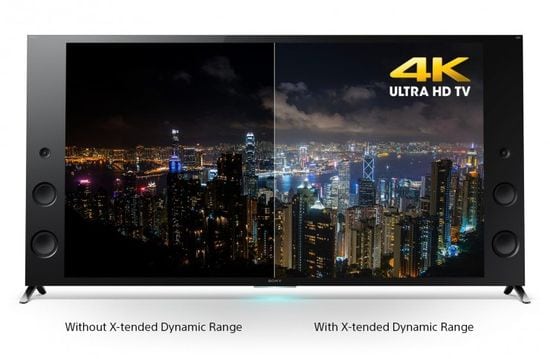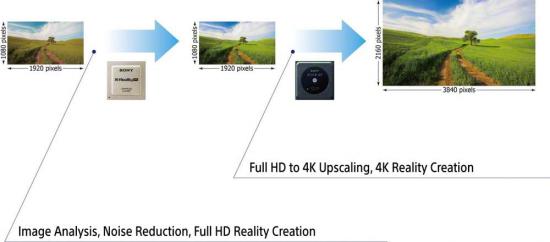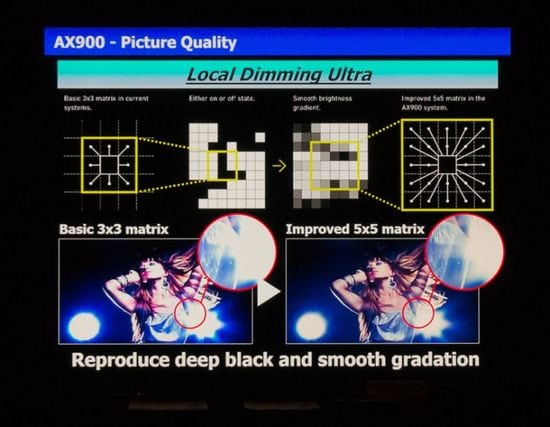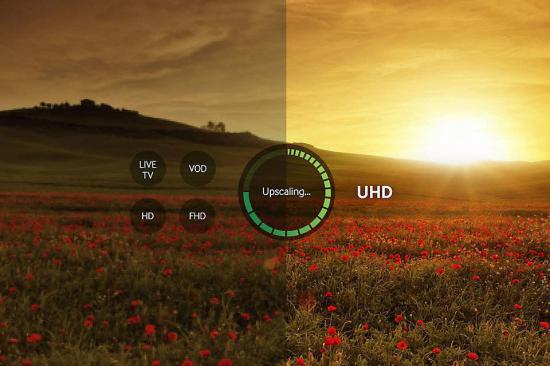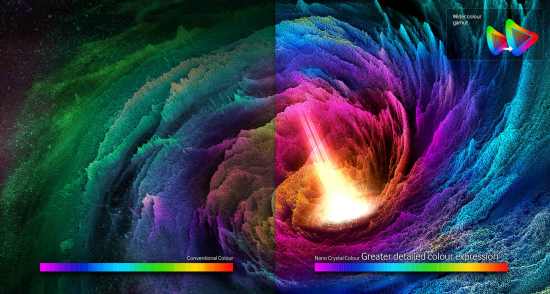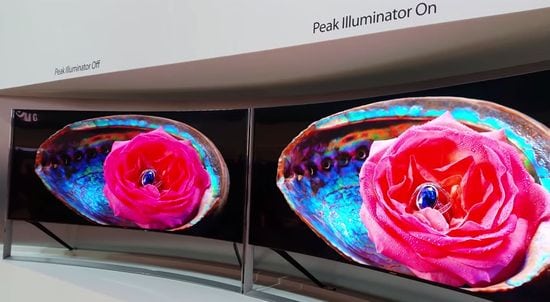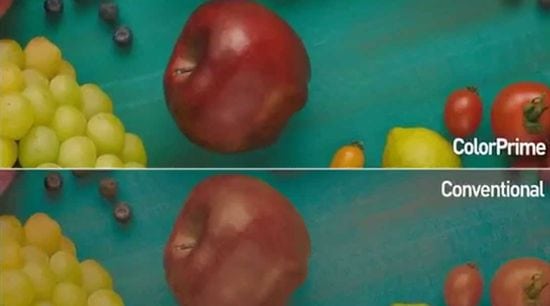A high level of competition among the leaders of this segment stimulates the intensive introduction of new technologies. This dynamic process is accompanied by the refusal of companies from some directions and the emergence of new ones. For example, today almost all companies refused to further develop the 3D-function and plasma models. At the same time, in 2015, Samsung proposed an innovative quantum dots technology for backlight.
It has the following advantage. LED backlight uses only white LEDs. The backlight with the help of colored RGB LEDs is considered better due to the increase in the color gamut of the resulting image. But RGB backlight is significantly more expensive. The quantum dots provide a RGB backlight for matrix. According to manufacturers, these models are close to OLED screens by image quality.
Of course, innovative technologies significantly improve the competitiveness of any household technology due to expanding their functionality and consumer characteristics. But, their significantly increase the cost of the model, reducing the quality / price ratio and influencing the choice of the optimal TV.
Today each company has its own development strategy for its model range.
SONY
Today all SONY 4K TVs use TRILUMINOs Display, X-Tended Dynamic Range and 4K X-Reality PRO technologies.
1. TRILUMINOs Display technology extends playback range of red, green and blue shades, providing a more natural color on the screen. Color gamut expands with the help of software methods. Previously, software methods provided too unnatural colors. Today, TRILUMINOs Display greatly enhanced this function.
2. X-tended Dynamic Range technology or diode carpet backlight increases the contrast of bright light and deep black image areas in one frame, providing the more detailed gradation of color transitions and wide dynamic range of brightness.
Today, almost all the leading TV manufacturers use different modes and technologies for increasing picture brightness. TVs on stands in the stores work in such modes. As practice shows, the user selects the brightest models. However, this function is practically not used in the future. X-tended Dynamic Range more correctly solves this problem.
3. The 4K X-Reality PRO technology uses hardware, including an additional co-processor and algorithms for improving picture quality. In fact, this technique is intended for the content playback with worse quality than 4K.
Panasonic
1. Local Dimming Ultra.
This technology provides a deep black and smooth gradation.
2. Super Bright Panel technology.
This technology supports the HDR effect. The TV brightness is increases by 2.5 times.
HDR (High Dynamic Range) is a graphical effect that provides more expressive rendering for image in conditions contrast illumination. Rendering is the process of visualization using a computer program.
3. SMD (Studio Master Drive).
This function provides a color gamut up to 98% DCI-P3 for the 65-inch model and up to 90% DCI-P3 for 55-inch model. A wide color gamut is mainly used for more saturated colors in soft areas of video scenes.
DCI-P3 is the color space. This standard is widely used in the field of digital cinema projection.
Samsung
Today Samsung SUHD TV is the most innovative model from this company that uses the following technologies.
1. Re-mastering Picture Quality CPU automatically analyzes the image brightness. Technology provides a high contrast and reduction of energy consumption. According to the company, this technology provides increasing the brightness 2.5 times, the playback of much more saturated black shades and doubling the number points of the color adjustment for the most accurate color rendering.
2. Nano Crystal Color technology.
Nanocrystalline semiconductors provide a color formation depending on the size of each dot. This significantly improves light output and color accuracy.
3. Peak Illuminator technology.
This technology provides a smart backlighting. Peak Illuminator reduces the TV power consumption in the dark areas of the screen and uses this energy for increasing the brightness of the light areas on the screen, providing improved contrast and deep black.
4. UHD Dimming technology.
The technology of local dimming increases image contrast, providing the more pure white tone and deep shadows. This is particularly evident in night scenes. Other companies also use a similar technology.
5. Auto Depth Enhancer technology (zonal amplifier of contrast).
It’s designed for the curved screen. The technology increases the image volume by improving the contrast between the foreground and background.
Powerful quad-core processor of UHD Evolution Kit module is able to recognize and handle the multiple image layers. It identifies them as a back, mid or fore plan and the central object. The module then selects main a moving object and increases the brightness and contrast in this area.
Accordingly, the peripheral areas of the image are perceived less contrast. The central region visually is pushed to the fore. This technology works especially well for person or moving object in the screen center. In fact, it provides almost 3D-effect.
LG
1. LG Magic Remote for WebOS Smart TV.
2. ColorPrime technology.
This technology is designed for increasing the number of displayed colors.
3. Ultra HD Engine system.
Video processing system enhances the image quality. The system also converts SD and HD video up to UHD quality .
4. Wireless sound sync technology.
This technology provides wireless sound transmission to the external speaker system.
5. New VP9 codec for 4K video.
6. Built-in HEVC receiver for processing the 4K video.
7. Sound technologies ( Smart Sound Mode, Clear Voice II, Virtual Surround Plus, 3D Sound Zooming).
This video demonstrates main innovations in TVs at CES 2019, including LG Signature OLED TV R (65R9), Samsung Micro LED “The Wall”, etc.


